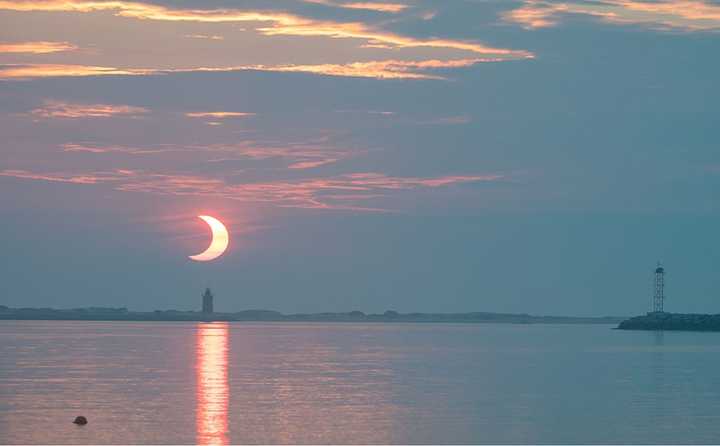It will pass in front of and partially block the sun, casting a shadow on parts of the Northern Hemisphere on Saturday, March 29.
In much of the Americas, including the northeastern United States, the partial eclipse will already be in progress during sunrise.
"The central part of the moon’s shadow, where the sun would appear completely blocked, misses Earth, so no one will be able to see a total solar eclipse this time," NASA said, noting that "everyone watching the eclipse must use proper eye protection or an indirect viewing method to protect their eyes."
For a rundown of viewing times by city see the chart below from NASA. The city is followed by when the coverage period starts Saturday morning, maximum viewing time, the coverage percentage, and when the coverage period ends:
- Baltimore 6:55 a.m., 6:57 a.m., 3 percent, 7:02 a.m.
- Boston 6:31 a.m., 6:38 a.m., 43 percent, 7:07 a.m.
- New York City 6:44 a.m., 6:46 a.m. 22 percent, 7:04 a.m.
- Philadelphia 6:49 a.m., 6:51 a.m., 12 percent, 7:03 a.m.
- Washington, DC 6:56 a.m., 6:59 a.m., 1 percent, 7:01 a.m.
When watching a partial solar eclipse directly with your eyes, you must look through safe solar viewing glasses (“eclipse glasses”) or a safe handheld solar viewer at all times, NASA said, noting that eclipse glasses are not regular sunglasses.
Click here to follow Daily Voice Hazlet and receive free news updates.
